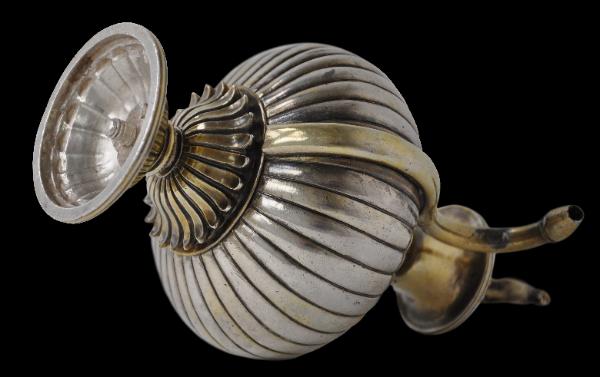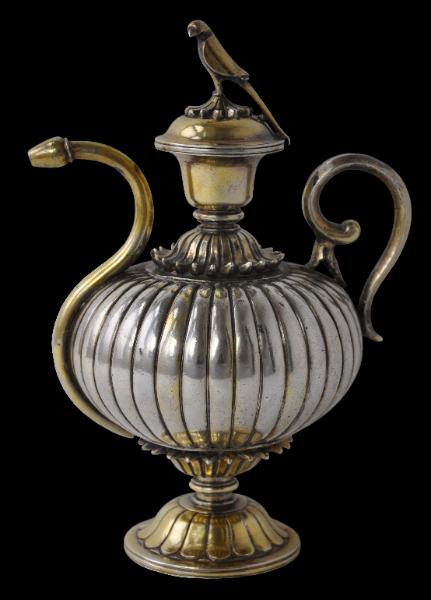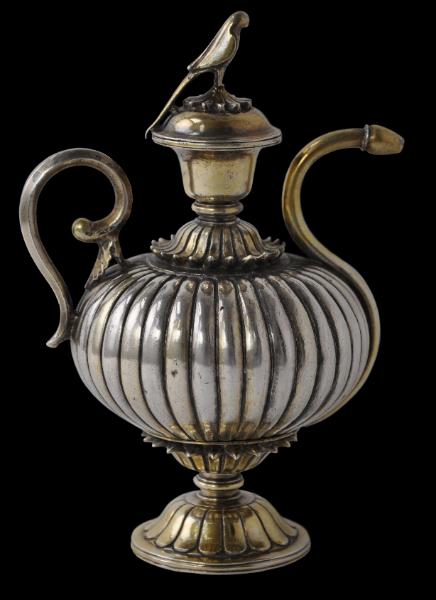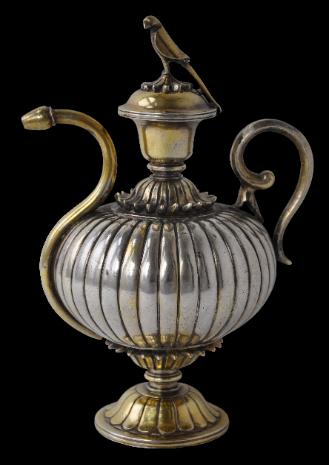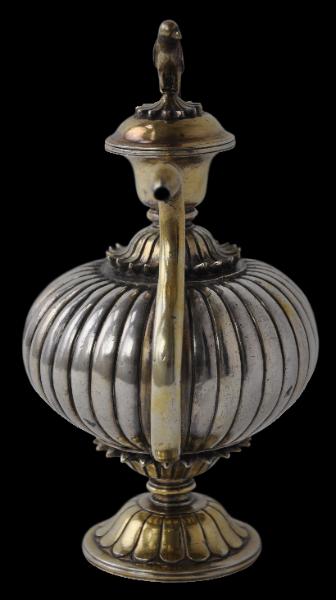
Mughal Silver Opium Water Flask (Chuski)
Mughal Parcel-Gilt Wine or Opium Water Ewer (Chuski)
North India
circa 1800
height: 16.5cm, weight: 407g
This is the finest Mughal chuski that we have seen. Cast from solid silver and with beautiful gilded (gold-plated) highlights (ganga-jamni), it is surprisingly heavy in the hand. Such ewers were used by the Mughals (who were Muslims) and the Rajputs (who were mostly Hindu) of north-western India to serve wine (araq) or opium water (kusumbho) to guests. It dates to the late 18th or early 19th century and is typically 18th century in style.
It sits on a flared, domed foot elegantly decorated with tapering lotus petals and gilded. The stem leads to a superbly cast and gilded cast rosette of ribbed lotus petals on which the flattened spherical body sits. The body is decorated with fine gadroons which retain remnants of gilding on each alternate rib. The body is surmounted by another gilded cast lotus rosette, and a plain but gilded neck that flares at the top. A domed and gilded lid fits overt the neck. This is surmounted by a finial that comprises gilded parrot resting on another cast lotus rosette.
The spout is thin, gilded and ‘S’ shaped. It wraps down, around the body, and at the pouring end, terminates with a fine, bud-like aperture. The solid-cast, gilded and faceted handle has a similarly curved form.
Some extant examples of illustrated chuskis have small stoppers and attached chains; and others so not. This one is without such a chain. It sits solidly and evenly. It is in excellent condition. Overall, it is an elegant, and well proportioned item, with an almost excessive use of silver, and with a very pleasing contrast between the gilded and non-gilded areas.
The item was acquired in the UK and almost certainly arrived in the UK during colonial times.
Several chuskis are illustrated in Terlinden (1987, p. 119-20).
References
Terlinden, C., Mughal Silver Magnificence, Antalga, 1987.
Provenance
UK antique market
Inventory no.: 2069
SOLD

